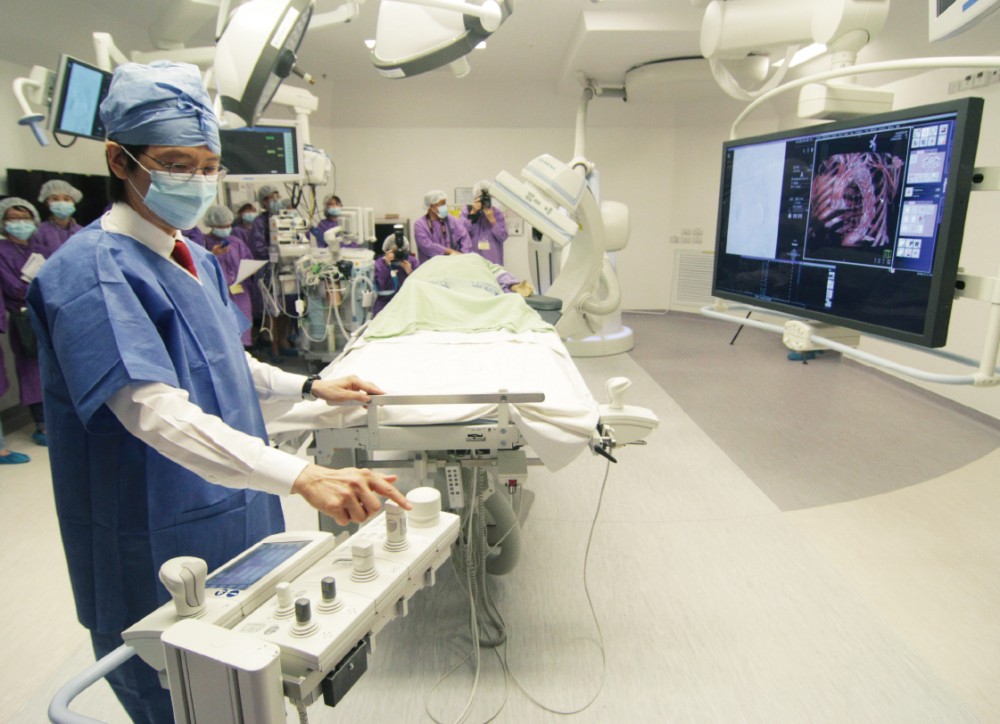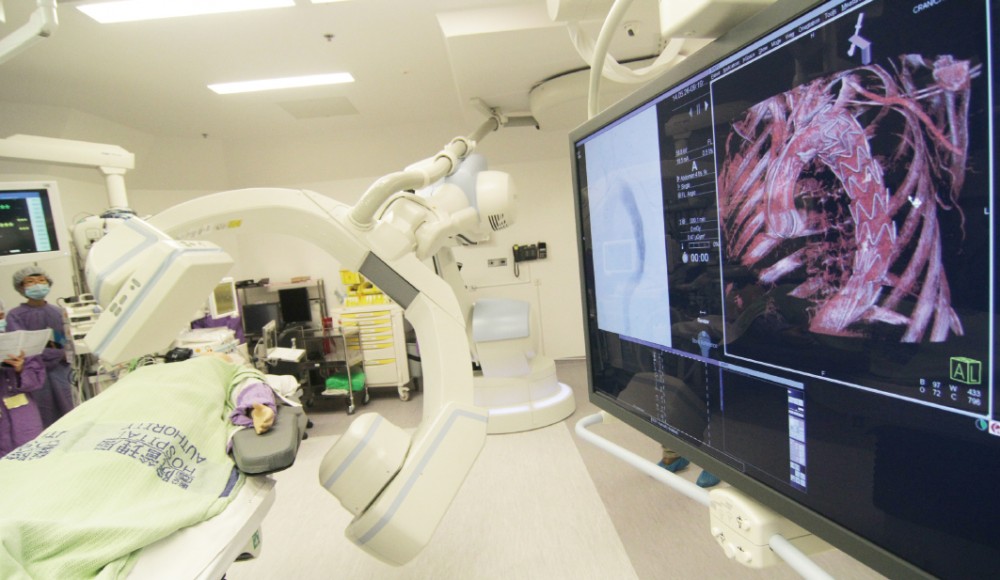Robotics can help improve the accuracy of surgical procedures to reduce post-operative complications. Philip Chiu, Associate Dean (External Affairs) of the Faculty of Medicine at The Chinese University of Hong Kong (CUHK) and Director of Multi-Scale Medical Robotics Centre, strives to promote surgical robotics on all fronts through the strengths of a start-up in order to benefit more patients.
According to Chiu, the concept of robotics was first put forward by NASA in the 1970s and later successfully adopted for surgical procedures, leading to great progress in this area.
Application of robotic arm improves surgical quality
 “CUHK brought in its first robot in 2006, and set up a robotics training centre. At the same time, many clinical applications were carried out at its Faculty of Medicine.” Meanwhile, CUHK’s mechanical engineers made a lot of development achievements. Chiu stressed that although robotic arms are relatively expensive, they can help improve the quality of surgical procedures and more importantly, reduce post-operative complications for patients.
“CUHK brought in its first robot in 2006, and set up a robotics training centre. At the same time, many clinical applications were carried out at its Faculty of Medicine.” Meanwhile, CUHK’s mechanical engineers made a lot of development achievements. Chiu stressed that although robotic arms are relatively expensive, they can help improve the quality of surgical procedures and more importantly, reduce post-operative complications for patients.
Citing the experience of Prince of Wales Hospital, Chiu said that the use of its robotic arm enables multi-angle flexibility so that the lymphatic tissues in a patient’s body can be seen more clearly, thus allowing for more accurate surgical segmentation. “CUHK’s Faculty of Medicine completed the world’s first inter-disciplinary clinical study in 2017, from which it found that the relevant technology can be successfully used for otolaryngology and colon surgeries.”
Chiu is convinced that the development of robotics will be more diversified and substantial going forward, which will again lead to new breakthroughs for surgical operations.
New technology development, popularisation and application
 Cornerstone Robotics, a start-up founded in 2019 by a team led by Professor Samuel Au of CUHK’s Department of Mechanical and Automation Engineering, is a company engaged in the R&D of robotics. Chiu said that he shares the same philosophy as Au, that is, they want to popularise medical robotics with the aim of bringing the technology up to the level that meets the high requirements of surgeons and reduce costs.
Cornerstone Robotics, a start-up founded in 2019 by a team led by Professor Samuel Au of CUHK’s Department of Mechanical and Automation Engineering, is a company engaged in the R&D of robotics. Chiu said that he shares the same philosophy as Au, that is, they want to popularise medical robotics with the aim of bringing the technology up to the level that meets the high requirements of surgeons and reduce costs.
Chiu is pleased to see that in three short years, the collaborative efforts of the start-up team have produced many models for proving this technology and made a series of clinical research and technology developments. “We have completed over 30 clinical trials to ensure that the newly developed robotic arm can be used clinically to benefit patients.”
Explaining further, Chiu cited the aforesaid acid reflux surgery as an example, saying that it required a very high degree of precision, otherwise it could cause injury to other tissues. In addition, there had to be no delay in the surgical procedure, otherwise there could be massive bleeding. It goes to show that the technology has reached a very high level of precision.
Setting up a R&D centre to specialize in medical robotics
 While in Hong Kong in July this year, President Xi Jinping visited the start-ups located in Hong Kong Science Park, including Cornerstone Robotics, which Chiu believes reflects the country’s significant support for Hong Kong’s development in the field of innovation and technology.
While in Hong Kong in July this year, President Xi Jinping visited the start-ups located in Hong Kong Science Park, including Cornerstone Robotics, which Chiu believes reflects the country’s significant support for Hong Kong’s development in the field of innovation and technology.
“Our strengths are in having access to Prince of Wales Hospital, which have both clinicians and patients, and CUHK’s Faculty of Medicine, to jointly conduct clinical research with the start-up located in the Science Park. Since it only takes 15 minutes to travel between these three places, it is set to comprehensively improve the speed and chances of success in medical technology R&D.” Going forward, Chiu looks to focusing on research in transferring medical robotics to clinical application, and proving and applying new medical technologies in the R&D centre ahead of clinical application.




